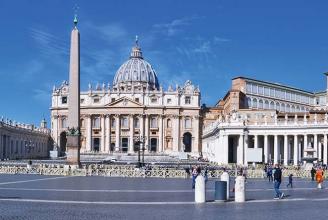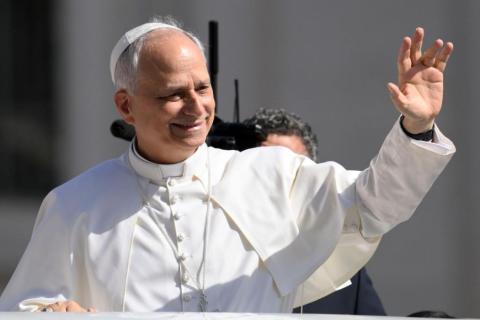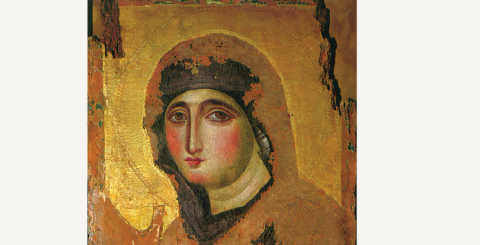
Photo by Petia Stoycheva | Dreamstime.com
As we think about the 60 years that have passed since the opening of the Second Vatican Council, it is interesting to think about the event of the council in the life of Focolare founder Chiara Lubich.
She was not shocked by the need for renewal. The spirituality of communion that marked Lubich’s own charism pre-dates the historical event of the council but was confirmed and deepened in this remarkable ecclesial encounter whose 60th anniversary we celebrate this year.
Why was Vatican II significant when it occurred? The transition from Latin Mass to the vernacular came in its wake. The first document promulgated by the Fathers of the Council, Sacrosanctum Concilium (1963) on the liturgy, called for more conscious, active participation of the laity in the Eucharist.
This is only one element in a larger story. Recently, Pope Emeritus Benedict XVI wrote to the participants in a conference at the Franciscan University of Steubenville. “In Vatican II the question of the Church in the world finally became the real central problem.”
Benedict says in that same letter that the Middle Ages gave the Church too much authority over temporal affairs, and one significant modern Protestant counter position was to spiritualize the role of the Church.
In the world, not of the world
The council inherited this problem of finding a place for the Church in the world that addressed the spiritual hunger of the faithful while not ignoring systemic problems in world order itself, or its own role in promoting social institutions in the service of, for example, education or health. In other words, the council had to articulate in a coherent way how the Church is in the world without being of the world.
The Pope Emeritus is correct, I believe, to see this goal as the overarching one of the council, but not one document was able to address the multifaceted dimensions of the pivotal question, “How are Church and world connected according to the council?”
Lumen Gentium (1964), the dogmatic constitution of the Church, treated the universal call to holiness of the laity, and Gaudium et Spes (1965), the pastoral constitution of the Church in the modern world, talked about reading the signs of the times in the light of the Gospel. In this latter context, social questions like peace, development, economic inequity and human rights were brought to the fore in a new and challenging manner.
Between these two foci an ellipse was circumscribed, the space that became the new terrain out of which late modern Catholicism has been invited to articulate its place in the world. A purely this-worldly and a purely other-worldly Catholicism are both ruled out on the same terms.
To be more concrete, all the members of the Church are called to follow the model of the saints in the pursuit of personal holiness and to attend to the social ills of the world.
Understanding God’s Word
Dei Verbum (1965) is the dogmatic constitution on divine revelation. It was equally groundbreaking and should not be approached as a kind of scout handbook on how to interpret the Bible. Instead, traditional questions like the relationship of Scripture and tradition and the inspiration of the Word of God were elaborated in the broader context of God’s revelation of a saving word of life through the flesh and blood of human words.
The title of the constitution is the clue to its very interpretation: Scripture is God’s Word. The divine origin does not make revelation inaccessible. On the contrary, the “condescension of the Word” (a phrase coined by St. John Chrysostom and cited in the constitution) into human language is what makes possible the personal encounter with the words and deeds of the Word made flesh.
The constitution made possible a more historical and linguistically responsible approach to sacred Scripture without turning the living Word into a cadaver to be dissected.
The Italian theologian Piero Coda, secretary of the International Theological Committee, has captured well the inner connection between this mystical approach to the Word and the new role accorded to the laity elsewhere in the documents of the council. In a 2001 essay, he follows Hans von Balthasar in highlighting the sudden epiphany of new charisms in the Church, and connects this gift to the council’s renewed spiritual and Biblical understanding of the Church.
“This flash of lightning makes manifest a new way of following Christ inspired by the Holy Spirit, and also a new illustration of revelation. So, dynamism and newness are characteristic of the charismatic gifts ‘both as a manifestation of the absolute freedom of the Spirit who abundantly supplies them, and as a response to the varied needs of the history of the Church (Christifideles Laici, 24). They thus contribute in a definite way—as Dei Verbum teaches—toward the Church’s constant movement towards the fullness of divine truth, ‘until the words of God reach their complete fulfilment in her.’” (8)
Opportunities for renewal
After the council, theologians began to divide up into camps, one of which emphasized the Church from below that is found in the council’s denomination of the Church as a People of God and another that focused on the approach from above that makes possible an ecclesiology of Communion.
Coda’s insights help us to avoid this false dichotomy. The co-responsibility accorded to the laity by the Fathers of the council is not in any way an abandonment of the Church’s hierarchical nature nor of the call of every baptized Christian to seek personal holiness. The Holy new flashes of lightning like ecclesial movements and other opportunities for renewal. The openness to the Spirit that operated in and through the council is what makes renewal in the Church both possible and necessary today.
Vigorous dialogue
What was said at the council explicitly about a spirituality of communion and dialogue? Paul VI’s encyclical Ecclesiam Suam (1964) opened the door to this reflection, but the paths to unity through dialogue and communion were also based upon older models of thinking about the Church as an organic body that grows and develops over history. Moreover, the Fathers of the Council retrieved and reconfigured a Patristic openness to dialogue with those outside the Church based upon the Biblical idea that the image of the Church as the body of Christ also promotes the absolute dignity of each human person as well as the unity of the human family.
Nostra Aetate (Oct. 28, 1965) accordingly charted a new path for interreligious dialogue by laying out concentric circles of unity that exist with Judaism, Islam and the other non-Abrahamic faiths. Its tone was positive and laid the groundwork for the vigorous dialogues that followed in its wake.
The decree Unitatis redintegratio (Nov. 21, 1964) made the same steps with regard to Christian unity by beginning with an articulation of Catholic principles for dialogue with other Christians.
An ongoing work
Did the council offer a magic potion for dealing with all the problems of the Church in the modern world? Hardly. A balance sheet submitted 60 years after the fact might note that little was done at the council itself to promote the agency of women, the social plight of the poor or ecological conversion.
On the other hand, Pope Francis’s call for a synodal Church that listens attentively to those on the margins grows directly out of the mandate in Lumen Gentium to attend among the people of God to the sensus fidei (“the spiritual instinct of the believer”).
Interpreting the Second Vatican Council and absorbing its wisdom are still unfinished tasks in the Church. The Arian bishops who persisted in the Church long after the council of Nicaea concluded in 325 are proof that the teaching of an ecumenical council can take a century or more to become a settled matter in the Church.
The two-part synod on synodality that will begin in the fall of 2023 is not an attempt to prepare an agenda for Vatican III, but rather a fulfillment of the council’s promise to strengthen the unity of the communion of the Church in order that the Church may serve as a credible witness to unity in the world.
After 60 years we have only begun to absorb the riches hidden in the event of the Second Vatican Council.












